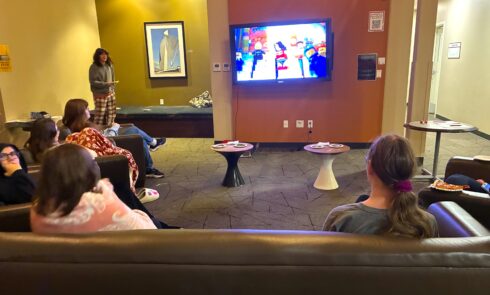Over the coming weeks, Southern Oregon University President Mary Cullinan will be making a decision as to what action to take in regards to the future governance of the university, and is currently looking input from the SOU community.
As a part of 2013 legislation, Senate Bill 270 was put forth detailing the establishment of individual governing boards for Portland State University and University of Oregon. Later this bill was amended to include Oregon State University, as well as allowing the four remaining institutions within the Oregon University System (Eastern Oregon University, Oregon Institute of Technology, Southern Oregon University and Western Oregon University) to create their own plan(s) for governance.
As it currently stands the three main governance options are a singular institutional Board of Trustees for the university, a consortium board that would cover the four technical and regional institutions together, or affiliation with one of the larger universities.
“The ideal is to have a board that keeps the organization financially sound and adheres to the educational policies,” said Liz Shelby, Chief of Staff and Director of Government Relations for SOU.
All of these choices and variations within each are explained in greater detail along with pros and cons on a governance website setup by the university. The website includes letters from Cullinan, Governor John Kitzhaber, the text of Senate Bill 270, and other documentation and video surrounding this discussion.
The website also includes a survey for campus commentary that is currently set to close toward the end of November, although Shelby suggests there is a possibility it could remain open until the end of the term. Cullinan will be reviewing these responses before making a decision in early December.
Shelby explained that these comments aren’t read as votes towards a decision, but are more “to get a sense from the campus what people would be comfortable with.”
She also stresses the importance of understanding that this discussion surrounding governance is separate from retrenchment discussion that has been taking place simultaneously over the past few weeks.
So far participation from students in the governance survey has been very low, and almost nonexistent. Shelby is encouraging people to visit the website, familiarize themselves with the information provided, and make their voices heard as a community.
The December deadline for this decision is not a final plan in its entirety, according to Shelby, but more of a revelation of the direction the university will be heading in.
“We’re hoping that the four institutions will work together to make a similar choice,” said Shelby.
Other states exhibit models of the choices being examined, and the four institutions have been looking to those states for examples in this decision. The two states highlighted in documentation on the website are Michigan, which governs by individual institutional boards, and Pennsylvania, which follows the consortium model.
However, the university is still actively seeking local feedback to determine what would be best for SOU and the other remaining Oregon institutions.
“Our representation and how well our board has known us in the past has been very slim,” said Shelby. She explained that participation in this decision from those within the SOU community is the opportunity to change this.
“If students know that now is the opportunity to structure our governance so that it’s maybe more appreciative and more familiar with Southern Oregon University and its students and its funding level from the state—then I would say this is of importance,” said Shelby.
Though this is a change that may not be particularly visible to students, it is still a matter of importance. Shelby encourages members of the SOU community, particularly students, to visit http://governance.sou.edu/ for further reading on this topic and to voice their opinions.


